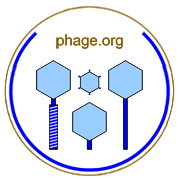

Chapter authored by Stephen T. Abedon and John Yin published in 2008.
Abedon, S. T. and J. Yin. 2008. Impact of Spatial Structure on Phage Population Growth. p. 94-113. In: S. T. Abedon (ed.), Bacteriophage Ecology. Cambridge University Press, Cambridge, UK. [Google Books]
Abstract: Limitations on bacterial mobility may be described in terms of an environment’s spatial structure: the degree to which diffusion, motility, and mixing are hindered or selectively enhanced. A large fraction of bacteria live within environments that possess spatial structure – within biofilms, within soil, or when growing in or on the tissues of plants and animals. This spatial structure affects phage movement and therefore phage impact on bacterial populations. Gaining an understanding of phage growth within spatially structured environments consequently is pertinent to developing a comprehensive understanding of phage ecology. Here we employ a working assumption that phage population growth in the laboratory in semisolid media (as within phage plaques) represents one approximation of phage population growth within spatially structured environments in the wild. We thus present an introduction to phage plaque formation with the hope that at least some of our discussion may be relevant to future studies of in situ phage ecology, such as spatially fine-grained analyses of phage population expansion within biofilms.
Contact web master. Return to terms.











